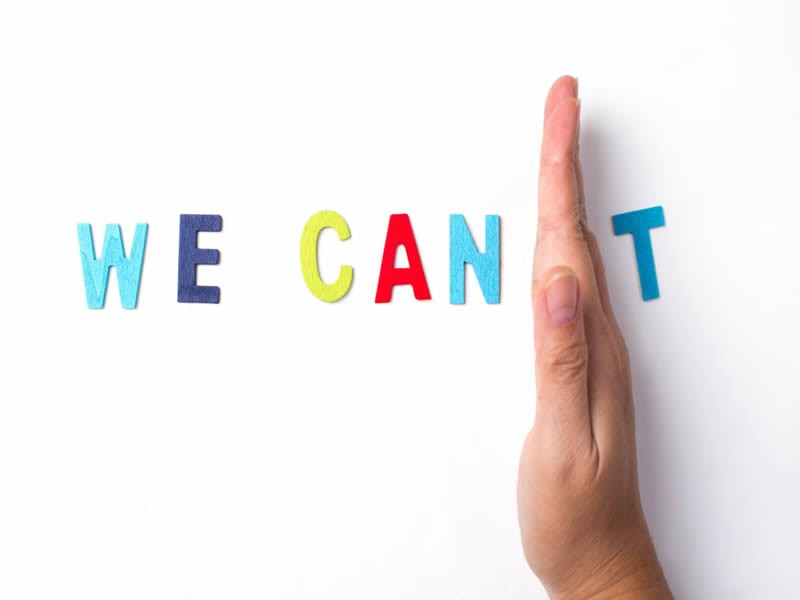Insight Blog
Agility’s perspectives on transforming the employee's experience throughout remote transformation using connected enterprise tools.
10 minutes reading time
(2073 words)
Understanding Change Enablers & Barriers To Change – UPDATED 2022
Learn about the factors that drive and hinder change with our updated guide on Understanding Change Enablers & Barriers. Stay ahead in 2022.
Understanding change enablers is important because it helps organizations identify the factors that drive change, which in turn can help the organization effectively implement changes and achieve its goals. Enablers can include things like technology, leadership, culture, structure, and processes. By understanding the enablers of change, organizations can better plan and execute change initiatives, overcome resistance, and increase the chances of success.
Businesses are constantly undergoing a variety of organizational changes in an effort to stay up with the ever-evolving business landscape, with the ultimate goals of increasing productivity and expanding income. Even if the number and complexity of changes are on the rise, only a third of change management attempts succeed.
To what end are these attempts at alteration failing? Organizations often overlook the human element of change management.
It's crucial to put a face to transformation. The resistance of employees to change, the power dynamics inside the organization, and external factors are often overlooked and "downloaded" by management. They use a top-down approach to change management and ignore the inevitable resistance that comes with imposing new ways of doing things.
Leaders can reduce this resistance by conducting a baseline assessment to pinpoint the obstacles to change and devise strategies to overcome them.
Why individuals resist change and what you can do about it are the topics of this article.
Download our free eBook on: Tracking Change Management
Key Characteristics of A Change Enabler
Change enablers play a crucial role in ensuring the success of change initiatives in organizations. These individuals or factors possess key characteristics that support and drive change.
Some of the key characteristics of a change enabler include being supportive, adaptive, communicative, influential, visionary, and collaborative. A change enabler should understand and align with the goals of the change initiative, be open to new ideas and ways of working, communicate effectively with stakeholders, have the ability to influence others, have a clear vision for the future, and work well with others to achieve common goals.
By identifying and leveraging the key characteristics of change enablers, organizations can increase the chances of successfully implementing change and achieving their goals.
- Supportive - A change enabler should support the change initiative and its goals.
- Adaptive - The ability to adapt to new circumstances, ideas and ways of working is critical for a change enabler.
- Communicative - Effective communication skills are necessary for a change enabler to engage with stakeholders and help them understand the change.
- Influential - A change enabler should have the ability to influence and motivate others to support the change initiative.
- Visionary - A change enabler should have a clear understanding of the future and a vision for how the change will benefit the organization.
- Collaborative - A change enabler should be able to work effectively with others to achieve common goals.
- Empathetic - A change enabler should be able to understand and empathize with the perspectives and needs of stakeholders.
- Proactive - A change enabler should be proactive and take the initiative to drive the change forward.
- Strategic - A change enabler should have a strategic approach to the change initiative and be able to see the bigger picture.
- Resilient - A change enabler should be resilient and able to overcome challenges and obstacles along the way.
Understanding Change Enablement
Every day, we have to adapt to new circumstances, whether it's a shift in the time we usually wake up or work or the inevitable arrival of a new season. We all feel the effects of change in our own unique ways. Effective change enablers share many of the same traits as transformational leaders.
Change enablement
The term "change enablement" is used to describe the practice of preparing individuals and groups within an organization for and facilitating the adoption of change by providing them with the knowledge, resources, and emotional and practical support they need to adjust to and benefit from transformational shifts successfully.
Every company will face the need for transition at some point, whether it's to respond to a crisis, undergo a radical transformation, or open the doors to new development opportunities. Organizations and teams can benefit greatly from change enablement in their efforts to adapt to these shifts.
Characteristics of change enablers
Change enablers can spark conversations about problems, leading to action that solves them. They can also try recruiting activists from within the organization who are eager to contribute.
Perhaps most significantly, they are not afraid to question the established order. Also, they invite and encourage dedication by having people participate in the process from the ground up rather than from on high. People who facilitate change often ignore the idea that there is the best way to do things. They can pick up new skills as they go along. Those who facilitate change effectively should also be open to trying new things and fostering original ideas.
Change Enablement Vs Change Management: What's the difference?
The two names are sometimes used interchangeably, yet there are subtle distinctions between them.
When an organization implements new procedures, resources, or projects, it employs a change management strategy to help its staff members adjust to the changes.
Although there is a lot of overlap in how to change enablement is stated, the nuances can be uncovered in this way. There are strict hierarchies in place for managing changes. In the context of change enablement, the impetus for transformation might originate in any department. Change enablement relies heavily on excellent communication, which is why it is one of the five pillars of effective change management.
What are the primary enablers of change?
Leadership in the future will need to take on a new form that encourages team members to innovate rather than micromanage. To think like this distinguishes you from mere change managers and positions you as an enabler of transformation.
Here are the primary enablers of change:
●Allow enough time to digest the change
●Bring diversity to your leadership team
●Communicate and show what is happening in the organization
●Bring clarity to assigned roles
●Establish clear communication channels
What are the Enablers & Barriers To Change?
We have identified the top barriers to change that result in the failure of the change program, but these may be different for different organizations.
Lack of ownership
Critical parts of a project are less likely to be completed if no one takes responsibility for them. Blame is generally cast elsewhere when things of this importance slip through the cracks. This wouldn't have happened if responsibility had been given to somebody from the start.
Involvement from both upper management and front-line workers is essential for a successful change program.
Top-level buy-in is crucial for establishing the credibility of a change program. The role of the initiative's sponsors extends beyond financial support to include personal responsibility for and a commitment to the new direction. However, the change can't be implemented on the ground level without the support of the middle and lower management.
Resistance to change
Employee resistance to change is one of the most perplexing and intractable challenges faced by corporate executives today. The articulation of many illogical arguments for why the change will not work is one kind of resistance. Other manifestations include a sustained drop in productivity, an increase in "quits" and requests for transfer, chronic quarrels, sullen hatred, wildcat or slowdown strikes, and so on. The smallest acts of defiance can add up to big problems.
Lack of planning
Productivity loss, employee disengagement, attrition, and resistance are just some of the bad outcomes that can occur when change is implemented without appropriate planning and consideration of the impact on personnel. Those undesirable outcomes and dangers usually have monetary repercussions. The time it takes for staff to learn and implement the new procedure, as well as for the government organization to receive a return on its investment, will increase.
Bad change management communication
Change management in any firm relies heavily on effective communication. Serious problems, including the possible closure of the company, might arise when employees fail to provide important information to one another. Employees need to be informed of the changes in order to address any issues that may develop.
The organization's ability to communicate effectively is seen as crucial to its success. Inadequate methods of communication can cause unnecessary delays, as the intended recipient may not be the same as the recipient of the message.
Lack of clarity
There is often a lack of clarity in the communication of the scope and goal of the proposed change when change projects are launched. Usually, this is the result of the change management team, who are familiar with all the ins and outs of the situation, not providing adequate responses to the queries raised by employees and other stakeholders. Or they do it using change documentation that is so lengthy and cryptic that not even an astrophysicist could understand it.
As a result, the transformation program is poorly implemented and causes uncertainty and opposition. In other words, there's no point in even beginning the project because it will fail.
Lack or poor change governance
Establishing a change project without proper change governance can significantly impede forward movement. Without proper managerial oversight, projects may go behind schedule due to a lack of accountability among team members, political bickering, and reversals of previously made choices. People may fail to take action if they are uncertain about who is authorized to make decisions or who should be getting informed about crucial issues.
Change fatigue
Thinking that we can simply "repair" a culture is problematic. As a result of implementing new procedures and systems, an organization's culture will gradually shift over time.
Getting workers to accept change is difficult because they may feel like they're being told they need to change processes and practices over and over again while the leadership team and managers continue to do the same things they've always done. There's always a burst of optimism, but in the end, nothing ever changes.
How can you overcome the barriers to change management?
Change requires communication, which can be difficult because change agents sometimes have to reach out to vast groups of people who are experiencing stress on top of the normal strains of life. To achieve effective and lasting change, companies must address the following critical communication difficulties related to change management.
Explain the disadvantages of legacy processes
From the get-go, some data files and formats may be initially supported by legacy systems. However, after a while, these standards tend to expand beyond what the legacy system can handle.
Because of the limitations of outdated software, businesses would be hampered in their efforts to succeed. Therefore, these companies would miss out on crucial chances.
Provide training
Far too often, businesses reduce change management to a set of procedures for making announcements and getting employees on board with new initiatives. If you want your employees to make a smooth transition during times of organizational change and reduce the costs associated with disengaged or poorly aligned teams, you need to provide them with training and education on the new processes and procedures that will be implemented.
Avoid fatigue
The effects of change fatigue can be mitigated by adopting a gradual, phased approach to transformation rather than a sudden, drastic one. Ensure that your employees are not overwhelmed by starting small and gradually scaling up.
Focus on change communication
Since change is personal, you need to treat change communication with respect and sensitivity. The less resistance you may expect, the more explicit you can be about the transformation process. Provide direct responses to "what's in it for me?" and other similar inquiries. Clarity can be achieved through careful documentation of the procedure, key milestones, and necessary actions.
Wrapping up
The change enabler is analogous to the stage director, who works behind the scenes to make it possible for the performers to do their jobs. The enabler's responsibility as a change facilitator is to assist in the formulation of the change management strategy and plans, as well as to provide the necessary support and resources to enable senior leaders and people managers to carry out their distinct, employee-facing responsibilities.
Categories
Blog
(2606)
Business Management
(321)
Employee Engagement
(212)
Digital Transformation
(174)
Growth
(119)
Intranets
(111)
Remote Work
(61)
Sales
(48)
Collaboration
(36)
Project management
(29)
Culture
(28)
Customer Experience
(26)
Knowledge Management
(21)
Leadership
(20)
Comparisons
(6)
News
(1)
Ready to learn more? 👍
One platform to optimize, manage and track all of your teams. Your new digital workplace is a click away. 🚀
Free for 14 days, no credit card required.

















